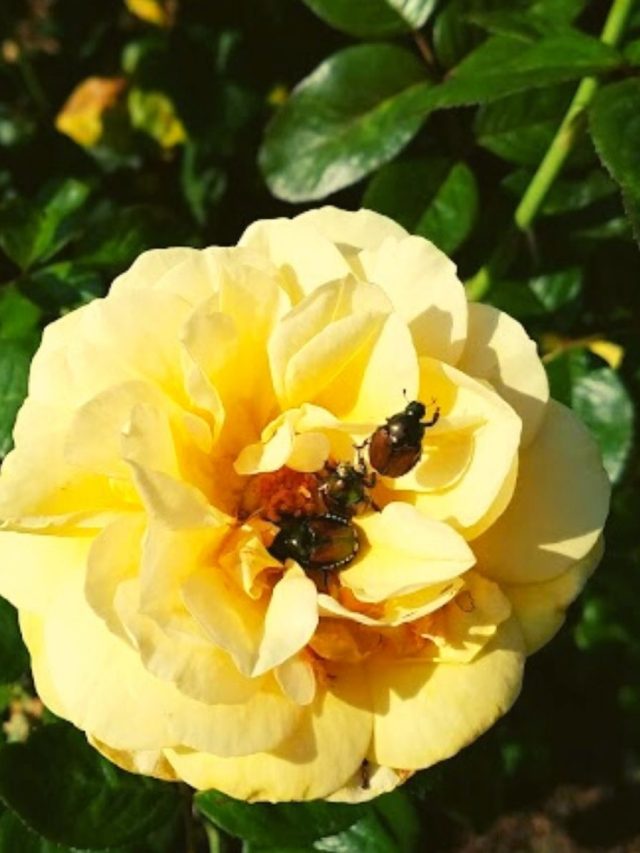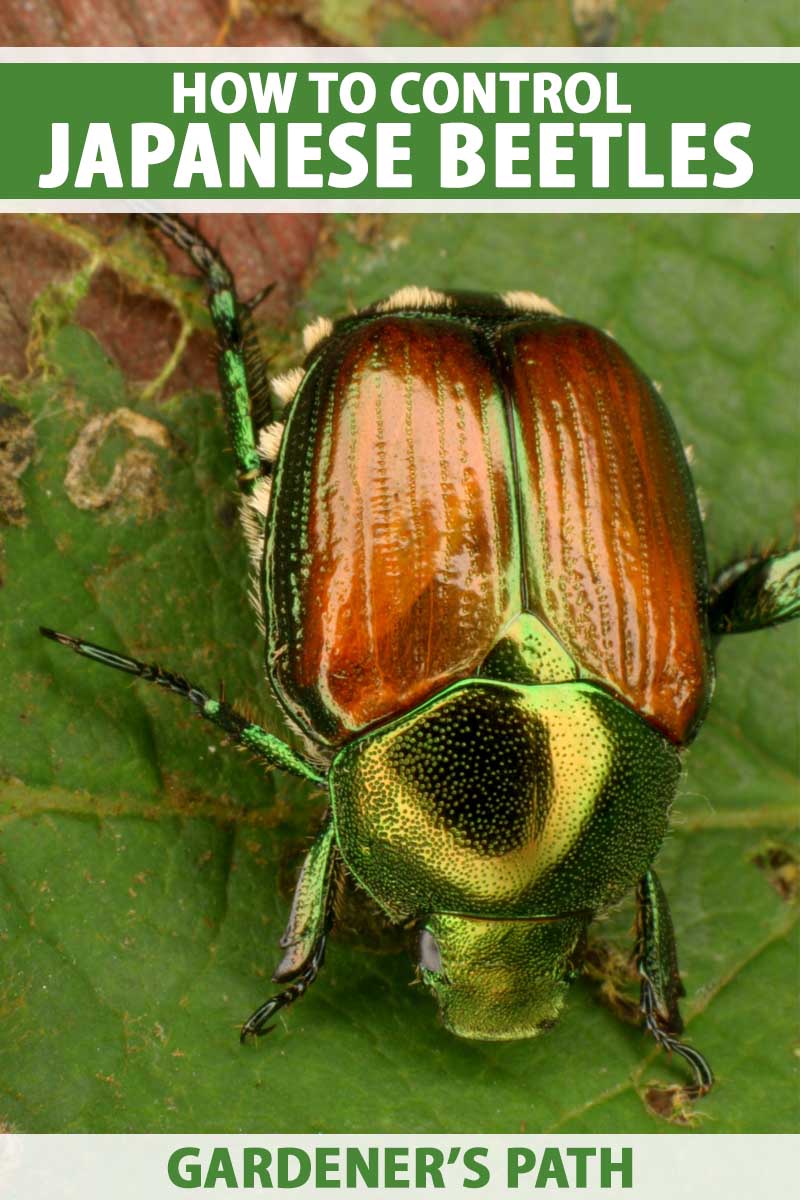Japanese beetles can be a nightmare for gardeners, turning lush green foliage into a skeletonized mess in no time. These tiny critters don’t just ruin the aesthetics of your garden; they also damage the health of your plants. If you’re looking for practical and effective solutions to get rid of these pests, you’ve come to the right place. We’re about to dive deep into the world of Japanese beetle control, so buckle up!
Picture this: you wake up one morning, excited to check out your flourishing garden, only to find your favorite rose bush looking like it’s been through a war zone. Yep, that’s the work of Japanese beetles. These shiny metallic insects might look pretty, but trust me, they’re troublemakers when it comes to your plants.
Now, before we get into the nitty-gritty of how to eliminate them, let’s understand why they’re such a big deal. Japanese beetles don’t just nibble on leaves; they feed on over 300 different plant species, causing widespread damage. Whether you’re a seasoned gardener or just starting out, dealing with these pests is something you’ll want to tackle head-on. Let’s jump into it!
Read also:Czech Wife Swap A Cultural Phenomenon You Need To Understand
Understanding the Japanese Beetle Problem
What Are Japanese Beetles?
Japanese beetles are invasive insects that were first discovered in the United States back in 1916. These little guys have a metallic green body with copper-colored wings, making them quite distinctive. But don’t let their beauty fool you; they’re voracious eaters that can wreak havoc on your garden in no time.
Here’s the kicker: Japanese beetles don’t just stick to one type of plant. They’ll munch on everything from roses and grapes to beans and corn. And if you think that’s bad, wait until you hear about their lifecycle. These beetles lay eggs in the soil, and their larvae (also known as grubs) feed on grass roots, causing damage to your lawn as well.
So, how do you know if you’ve got a Japanese beetle problem? Keep an eye out for skeletonized leaves, where only the veins remain. That’s their signature damage, and it’s a clear sign that these pests have moved in.
Why Are Japanese Beetles Harmful?
Damage Beyond Aesthetics
While the sight of skeletonized leaves might make your heart sink, the damage caused by Japanese beetles goes beyond just looks. When these beetles feed on your plants, they weaken them, making them more susceptible to diseases and other pests. In severe cases, the damage can even kill the plant.
Here’s a quick rundown of why Japanese beetles are harmful:
- They weaken plants by removing leaf tissue, reducing the plant’s ability to photosynthesize.
- They attract more beetles, creating a feeding frenzy that can decimate your garden.
- Their larvae damage lawns by feeding on grass roots, causing brown patches and bare spots.
Now that you know why these pests are such a threat, let’s talk about how to get rid of them. But first, let’s explore some natural and organic methods that won’t harm your garden or the environment.
Read also:Themaryburke3 The Untold Story Of A Rising Star
Effective Solutions to Eliminate Japanese Beetles
Handpicking: The Simple Yet Effective Method
If you’ve got a small garden, handpicking might be the way to go. This method involves physically removing the beetles from your plants and dropping them into a bucket of soapy water. It’s time-consuming, but it’s also one of the most effective ways to control a small infestation.
Here’s how to do it:
- Do it early in the morning when the beetles are less active.
- Hold the bucket of soapy water under the affected plant and shake the plant gently.
- The beetles will fall into the water and drown.
Don’t underestimate the power of handpicking. It might not seem glamorous, but it works wonders if you’re consistent.
Using Natural Predators
Encouraging Beneficial Insects
Nature has its own way of dealing with pests, and one of the best solutions is to encourage beneficial insects that prey on Japanese beetles. Ladybugs, lacewings, and parasitic wasps are all natural predators that can help keep the beetle population in check.
Here’s how you can attract these helpful insects to your garden:
- Plant flowers like dill, fennel, and yarrow, which attract beneficial insects.
- Provide a water source, like a shallow dish filled with water and stones.
- Avoid using broad-spectrum pesticides, which can harm beneficial insects as well.
By creating a welcoming environment for these predators, you’ll be doing your garden a huge favor.
Organic Pesticides: A Safer Option
Neem Oil and Pyrethrin
If handpicking and natural predators aren’t cutting it, it might be time to bring in the big guns – organic pesticides. Neem oil and pyrethrin are two effective options that are safe for the environment and won’t harm beneficial insects when used correctly.
Neem oil works by disrupting the beetle’s feeding and reproductive behavior, while pyrethrin is a natural insecticide derived from chrysanthemum flowers. Both are great choices for organic gardeners who want to keep their plants healthy without resorting to harsh chemicals.
Here’s a pro tip: always follow the instructions on the label when using any pesticide, organic or not. Overusing it can lead to resistance in the beetle population, making it harder to control them in the future.
Physical Barriers: Keeping Beetles at Bay
Fine Mesh Netting
Physical barriers are another effective way to keep Japanese beetles away from your plants. Fine mesh netting can be placed over your plants to prevent the beetles from reaching them. This method is especially useful for protecting valuable plants like roses and fruit trees.
Here’s how to use fine mesh netting:
- Install the netting early in the season, before the beetles arrive.
- Make sure the netting is fine enough to prevent the beetles from getting through.
- Secure the netting tightly around the base of the plant to prevent the beetles from crawling underneath.
While it might not be the most attractive solution, it’s definitely one of the most effective.
Traps: A Controversial Solution
Do They Really Work?
Japanese beetle traps are widely available and claim to be an effective solution for controlling these pests. But here’s the thing: they might not be as effective as you think. Studies have shown that these traps can actually attract more beetles to your garden, making the problem worse instead of better.
That being said, if you decide to use traps, here’s how to make the most of them:
- Place the traps far away from your garden, preferably on the perimeter of your property.
- Empty the traps regularly to prevent the beetles from escaping.
- Combine traps with other control methods for the best results.
Ultimately, traps can be a useful tool, but they should be used with caution.
Soil Treatments: Tackling the Grubs
Milky Spore and Nematodes
Remember those grubs we talked about earlier? They’re just as much of a problem as the adult beetles. To tackle them, you can use soil treatments like milky spore and nematodes.
Milky spore is a naturally occurring bacteria that specifically targets Japanese beetle grubs. It’s safe for humans, pets, and beneficial insects, making it a great choice for organic gardeners. Nematodes, on the other hand, are microscopic worms that parasitize the grubs, killing them before they can mature into adult beetles.
Here’s how to apply these treatments:
- Spread milky spore powder evenly over your lawn and garden beds.
- Water the area thoroughly after application to help the spores penetrate the soil.
- For nematodes, mix them with water according to the instructions and apply them to the soil using a watering can or sprayer.
Both treatments are effective, but they take time to work. Be patient and consistent, and you’ll see results in the long run.
Preventive Measures: Stopping the Problem Before It Starts
Plant Selection and Maintenance
Prevention is always better than cure, and when it comes to Japanese beetles, there are several things you can do to stop them from becoming a problem in the first place.
Here are some preventive measures you can take:
- Choose plants that are less attractive to Japanese beetles, such as boxwood, holly, and lilac.
- Keep your garden well-maintained by removing dead or damaged plant material, which can attract beetles.
- Water your lawn deeply and infrequently to discourage grub activity.
By taking these steps, you’ll be creating an environment that’s less appealing to Japanese beetles, reducing the chances of an infestation.
DIY Remedies: Get Creative with Your Solutions
Homemade Sprays and Repellents
If you’re the DIY type, you might want to try making your own beetle repellents. There are several homemade sprays and remedies that can help keep these pests at bay.
Here’s a simple recipe for a homemade beetle spray:
- Mix one cup of water, one tablespoon of dish soap, and one tablespoon of vinegar in a spray bottle.
- Shake well and spray directly on the beetles and affected plants.
- Reapply every few days or after rain.
Another option is to use garlic spray, which repels beetles with its strong odor. Simply blend a few cloves of garlic with water, strain the mixture, and add a little dish soap before spraying it on your plants.
Conclusion: Take Action Today
Japanese beetles might seem like an unbeatable foe, but with the right strategies, you can keep them under control and protect your garden. From handpicking and natural predators to organic pesticides and soil treatments, there are plenty of effective solutions to choose from.
Remember, the key to success is consistency and patience. Don’t expect to see results overnight, but if you stick with it, you’ll soon have a garden that’s free of these pesky beetles.
So, what are you waiting for? Get out there and start implementing these solutions today. And don’t forget to share your experiences in the comments below. We’d love to hear what works for you!
Table of Contents:
- Understanding the Japanese Beetle Problem
- Why Are Japanese Beetles Harmful?
- Effective Solutions to Eliminate Japanese Beetles
- Using Natural Predators
- Organic Pesticides: A Safer Option
- Physical Barriers: Keeping Beetles at Bay
- Traps: A Controversial Solution
- Soil Treatments: Tackling the Grubs
- Preventive Measures: Stopping the Problem Before It Starts
- DIY Remedies: Get Creative with Your Solutions


